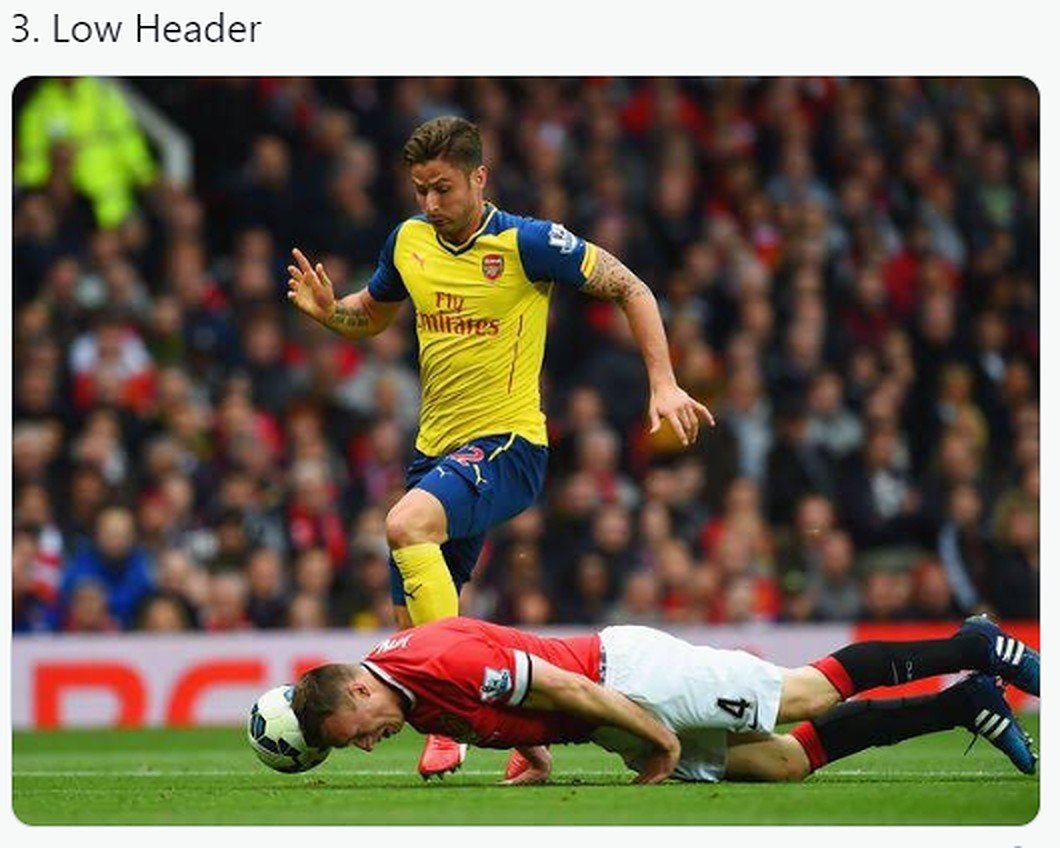Here Is The Easy Money-Making Trick Everyone Is Talking About! Learn More Here!
Football, the beautiful game, is known for its breathtaking skills and mesmerizing tricks. But what happens when these moves become too good to be allowed?
In the world of football, there have been some moves that were considered too dangerous, too unconventional, or simply too effective to be permitted on the pitch.
These forbidden moves pushed the boundaries of what was deemed acceptable, leaving spectators in awe and opponents in disbelief.
From the seal dribble to the low header, these six football tricks challenged the status quo and forever etched their names in the annals of the sport.
In this article, we will delve into the history of these forbidden moves, exploring their origins, their impact on the game, and why they ultimately became outlawed.
So get ready to be amazed as we uncover the secrets behind these extraordinary football tricks that were just too good to be allowed.
Seal dribble – The trick that revolutionized dribbling

The seal dribble, also known as the “Maradona turn,” is a move that revolutionized the art of dribbling. It was made famous by the legendary Argentine footballer Diego Maradona during the 1986 World Cup. The move involves the player using the outside of their foot to drag the ball behind them and quickly change direction.
This sudden change of direction often left defenders in a state of confusion, unable to keep up with the player’s agility and skill.
The seal dribble was not just a flashy trick; it had a practical purpose on the pitch. It allowed players to create space for themselves and evade defenders in tight situations.
However, despite its effectiveness, the seal dribble was eventually deemed too dangerous and unpredictable. Defenders argued that it gave attackers an unfair advantage and increased the risk of injury.
As a result, the move was officially banned by FIFA in 1997, much to the disappointment of football fans around the world.
The outlawing of the seal dribble sparked a debate among football enthusiasts. While some believed that the move added excitement and unpredictability to the game, others agreed with the decision to ban it, citing concerns about player safety.
Regardless of the controversy surrounding its prohibition, the seal dribble remains a testament to the ingenuity and creativity of footballers who constantly push the boundaries of what is possible on the pitch.
Shirt catch – The controversial move that defied the rules

The shirt catch, also known as the “shirt tug,” is a move that defied the rules of fair play. It involved a player grabbing onto an opponent’s shirt to gain an advantage, either by impeding their movement or by using it as leverage during a challenge.
This move was especially prevalent in the early days of football when the rules were not as strict as they are today.
The shirt catch was often used as a last-ditch effort by defenders to prevent an attacker from scoring. By tugging on their opponent’s shirt, defenders could disrupt their balance and throw them off their stride.
However, this move was seen as unsportsmanlike and unfair, as it gave the defender an unfair advantage over the attacker.
In the early 1990s, FIFA introduced stricter rules regarding the use of the shirt catch. Players were no longer allowed to grab onto an opponent’s shirt, as it was considered a foul.
This decision was met with mixed reactions from players and fans alike. While some argued that the move added an element of physicality to the game, others believed that it undermined the principles of fair play.
The ban on the shirt catch was a significant step towards promoting fair and equal competition on the football pitch. It sent a clear message that players should rely on their skill and technique rather than resorting to unsportsmanlike tactics.
Although the move is no longer allowed, its legacy serves as a reminder of the ever-evolving nature of the game and the constant need to adapt and refine the rules to ensure fair play.
Running knee-lock – A move that caused controversy and injuries

The running knee-lock, also known as the “flying knee,” is a move that caused controversy and injuries during its brief existence in professional football. The move involved a player leaping into the air and using their knee to strike an opponent, often in the chest or head.
It was a highly dangerous move that posed a significant risk to the safety of players on the pitch.
The running knee-lock gained notoriety in the early 2000s when a few players attempted to use it during matches. However, due to the potential for serious injury, the move was swiftly condemned by football authorities. The running knee-lock was seen as a deliberate act of aggression and a blatant violation of the rules of fair play.
The ban on the running knee-lock was a necessary step to protect the safety of players. Football is a physical sport, but there are limits to what is considered acceptable.
Moves like the running knee-lock crossed those boundaries, endangering the well-being of players and undermining the integrity of the game.
Today, the running knee-lock is strictly forbidden in professional football. Players who attempt to use this move face severe penalties, including suspensions and fines.
While some argue that the ban on the running knee-lock restricts the freedom of expression and creativity of players, the majority agree that player safety should always be the top priority.
Donkey kick freekick – The trick that left goalkeepers stunned
The donkey kick freekick, also known as the “reverse bicycle kick,” is a move that left goalkeepers stunned and spectators in awe. It involved a player executing a reverse bicycle kick to strike the ball during a freekick. The move was not only visually impressive but also highly effective, as it allowed the player to generate significant power and accuracy.
Donkey Kick goal
It won BBC Goal of the Year, but the incredible 'donkey kick' free-kick routine was banned at the end of the season.
The Freekick is Surprising 🤣🤣 pic.twitter.com/Z3AtC4pYmG
— CFC_OPTASEUN 🦅🦅 (@Cfc_optaseun) September 14, 2022
The donkey kick freekick was a highly controversial move due to its unorthodox nature. Traditional freekicks involved players striking the ball with their feet, but the donkey kick introduced a new level of complexity and difficulty. It required exceptional timing, coordination, and athleticism to execute successfully.
Despite its effectiveness, the donkey kick freekick was eventually banned by football authorities. The move was deemed too risky, as it often resulted in players losing balance and colliding with opponents.
Additionally, goalkeepers argued that the move gave attackers an unfair advantage, making it almost impossible to anticipate the direction of the shot.
The ban on the donkey kick freekick was met with disappointment by fans who enjoyed witnessing the spectacle of this extraordinary move.
However, the decision was made in the interest of player safety and fair competition. While the move is no longer allowed in professional football, its legacy lives on as a testament to the skill and creativity of footballers who are constantly pushing the boundaries of what is possible on the pitch.
Neck stall – A trick that pushed the boundaries of balancing

The neck stall, also known as the “head catch,” is a move that pushed the boundaries of balancing in football. It involved a player using their neck to cushion the ball and bring it under control, often after a high pass or clearance. The move required exceptional control and coordination, as the player had to absorb the impact of the ball with their neck while maintaining balance.
The neck stall was a move that showcased the technical prowess and agility of players. It allowed them to bring the ball down from the air and retain possession in tight situations.
However, the move was not without controversy. Opponents argued that the neck stall gave the player an unfair advantage, as they could control the ball with a part of their body that was not allowed.
As a result, the neck stall was eventually banned by football authorities. The move was seen as a violation of the rules of the game, as it involved using a part of the body that was not intended for ball control.
While some argued that the move added an element of creativity and flair to the game, the majority agreed that it went against the fundamental principles of fair play.
The ban on the neck stall was a necessary step to maintain the integrity of the game and ensure equal competition. While the move may no longer be allowed, its influence can still be seen in the evolution of football techniques and the constant search for innovative ways to control and manipulate the ball.
Low header – The move that challenged traditional heading techniques

The low header, also known as the “diving header,” is a move that challenged traditional heading techniques in football. It involved a player diving towards the ground to make contact with the ball using their forehead, often in an attempt to score a goal. The move required exceptional timing, bravery, and accuracy.
The low header was highly effective in situations where the ball was played low and fast into the box. It allowed players to generate power and accuracy, making it difficult for goalkeepers to save.
However, the move was not without controversy. Opponents argued that the low header posed a significant risk to the safety of players, as diving towards the ground increased the likelihood of head injuries.
As a result, the low header was eventually banned by football authorities. The move was seen as too dangerous and unpredictable, posing a significant risk to the well-being of players.
While some argued that the ban restricted the freedom and creativity of players, the majority agreed that player safety should always be the top priority.
The ban on the low header sparked a debate among football enthusiasts. While some believed that the move added excitement and unpredictability to the game, others agreed with the decision to ban it, citing concerns about player safety.
Regardless of the controversy surrounding its prohibition, the low header remains a testament to the ingenuity and bravery of footballers who constantly push the boundaries of what is possible on the pitch.
Why were these tricks forbidden?
The forbidden moves discussed in this article were deemed too dangerous, too unconventional, or too effective to be allowed in professional football. They challenged the status quo and pushed the boundaries of what was considered acceptable on the pitch.
These moves often posed a significant risk to player safety, undermined fair play, or gave players an unfair advantage over their opponents.
Football authorities, such as FIFA, introduced bans and regulations to protect the integrity of the game and ensure equal competition. These decisions were made in the interest of player safety and fair play.
While some moves may have been visually impressive or added excitement to the game, they ultimately had to be prohibited to maintain the integrity and fairness of football.



